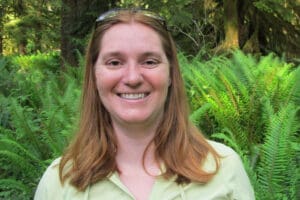While Antarctica is an icy, cold, desolate place today, 80 million years ago in the Late Cretaceous it was warm, forested and biogeographically connected to Australia and South America. What plants were growing in these forests, how diverse were they, and what was their role in the assembly of modern forests in the Southern Hemisphere today? This was during the period when flowering plants were diversifying and taking over ecosystems, how does this area compare to the global pattern of flowering plant diversification? In early 2024 I was part of a field expedition to James Ross Island in Antarctica to collect fossil plants to help answer these questions. With the fossils, we now are working to identify the leaves and reproductive structures (fruits, seeds, cones) recovered. This is done with comparative image analysis, microCT data, and phylogenetic analyses to place fossils in an evolutionary and ecological framework.
My BSc and PhD are from University of Alberta. I did a postdoc at Royal Holloway University of London, then came to UM. I was a Michigan Society of Fellows junior fellow, lecturer, and research scientist before joining the tenure-track faculty.
